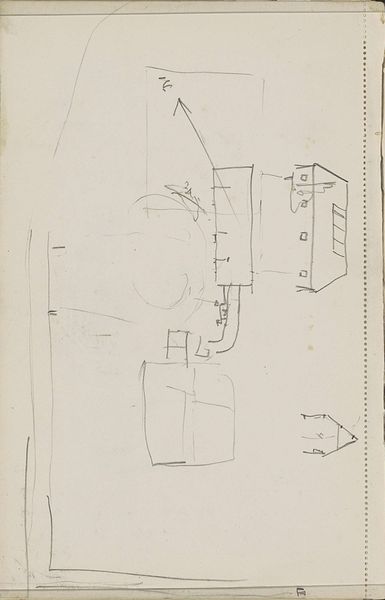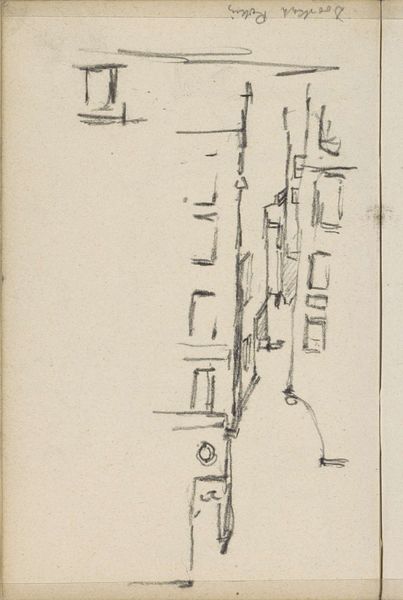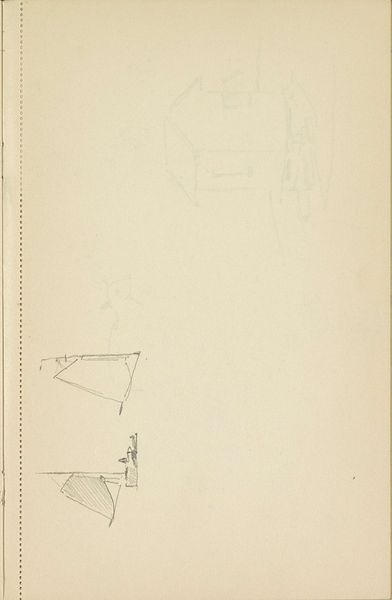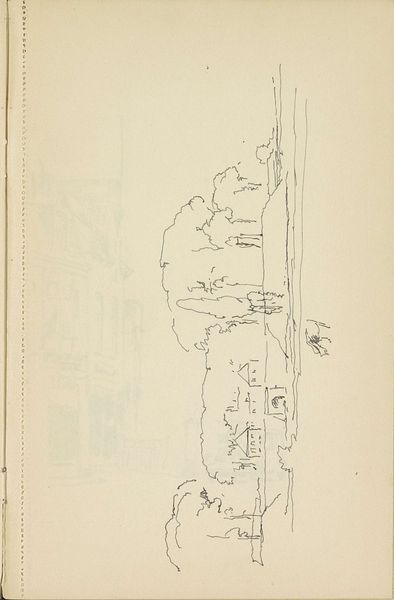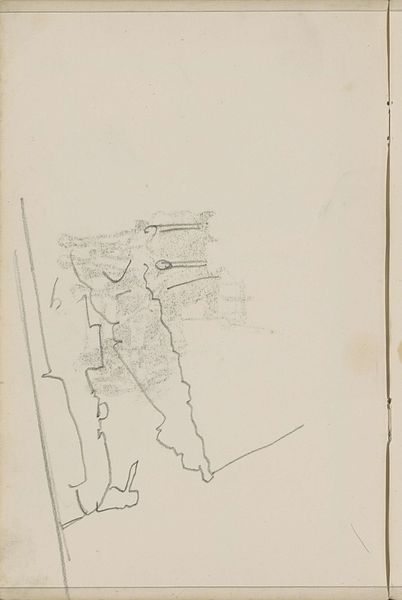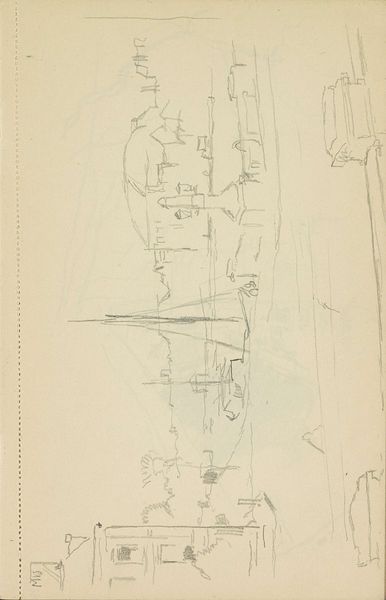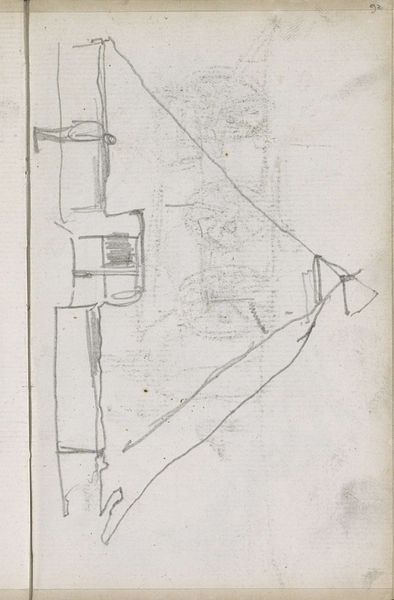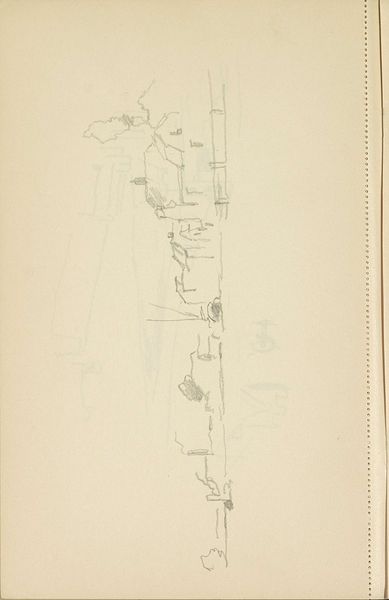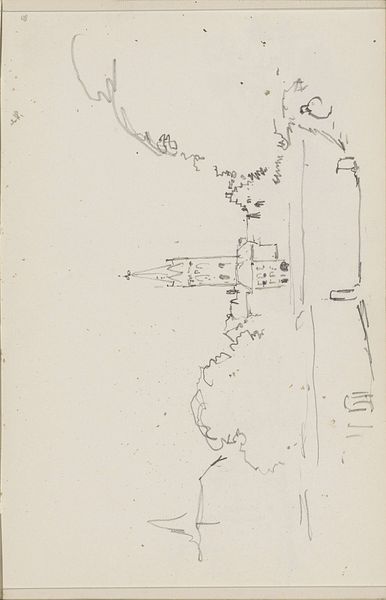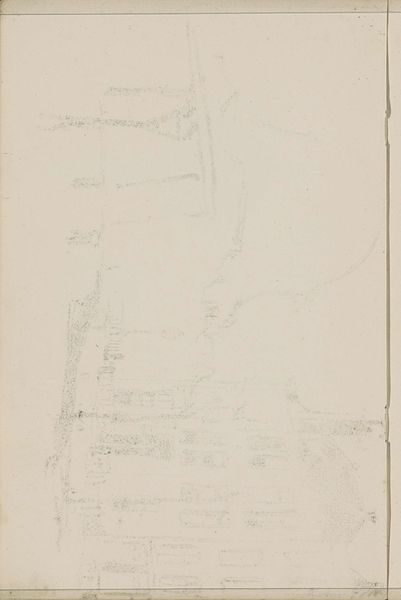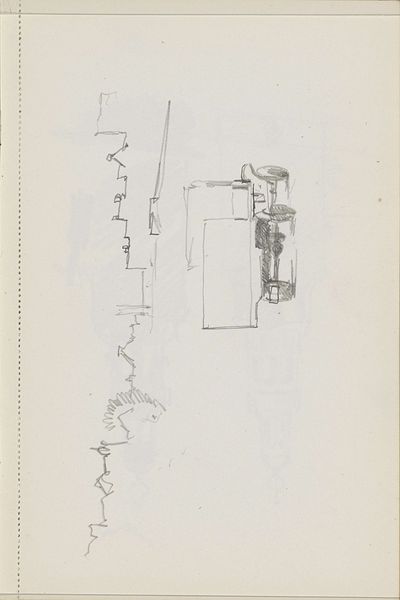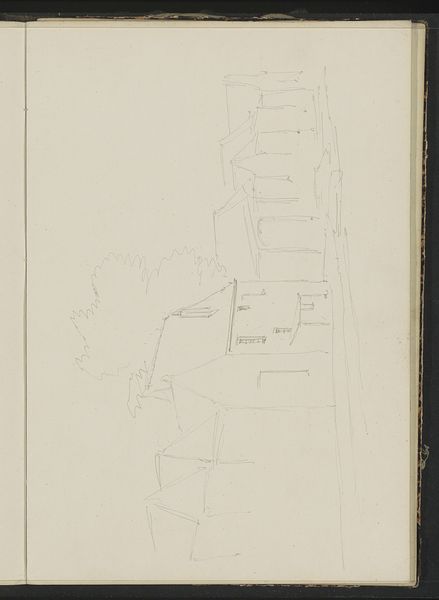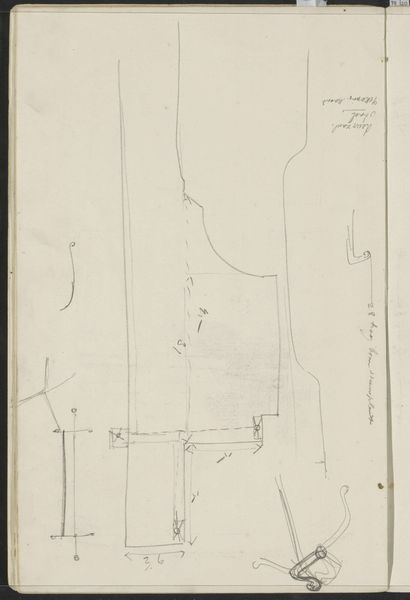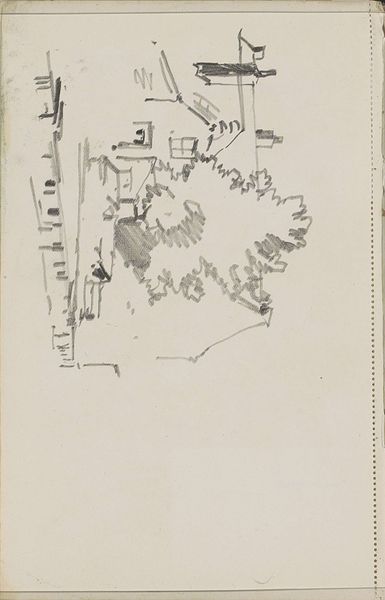
drawing, pencil
#
drawing
#
geometric
#
pencil
#
line
#
cityscape
Copyright: Rijks Museum: Open Domain
Curator: This is Cornelis Vreedenburgh's "Plattegrond," a pencil drawing on paper made sometime between 1890 and 1946, now residing here at the Rijksmuseum. Editor: The sketch's starkness gives a sense of isolation, almost like an abandoned architectural proposal. The sharp, unfinished lines hint at impermanence. Curator: Indeed, the preliminary quality of this piece is intriguing. Vreedenburgh's use of pencil and paper is quite common in architectural renderings; these materials make revisions seamless to planning and execution. Note, too, the paper's texture and the soft graphite lines are as important as the geometric forms themselves, emphasizing that the drawing is also a hand-made object. Editor: Absolutely. The simplicity draws my attention to how urban planning shapes experiences of space. Think of whose perspectives informed these early layouts, or whose voices were marginalized in this design. The geometry speaks to control and the organization of populations, doesn't it? It prompts us to ponder accessibility, equity, and power dynamics implicit in our built environments. Curator: That’s a stimulating connection. The linear style of the sketch prioritizes clarity and functionality. Each line serves to construct space. Considering the period, we can investigate how industrialization and societal needs played a crucial part in urban redesigns. Were existing urban fabric redeveloped to streamline modes of transit, and manufacturing for better consumption? Editor: Right! This object also makes me think of the displacement and erasure often integral to urban "improvement" and modernity. "Plattegrond" then turns from just a blueprint to a poignant record. It speaks of growth, certainly, but also invites us to see the narratives—of those whose lived realities aren't necessarily inscribed within these lines. Curator: I’m now more convinced of how an seemingly ordinary piece of draughtsmanship has deeper cultural ties with its original context of urban change! The value lies not just in what the image represents, but in what that production process tells us. Editor: Exactly! And to recognize how plans like this actively participated in configuring the life, struggles, and movements of individuals and communities, beyond surface representation, can prompt more critical evaluation today!
Comments
No comments
Be the first to comment and join the conversation on the ultimate creative platform.
